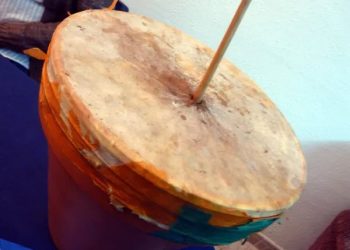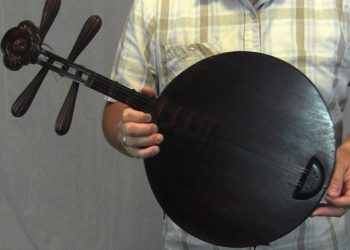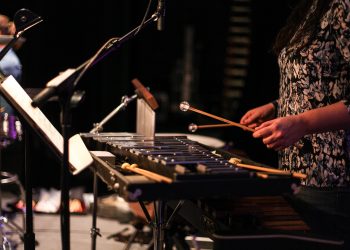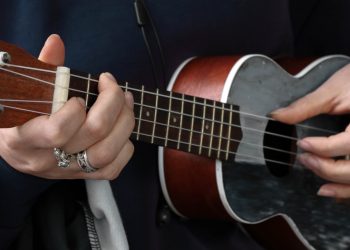When it comes to musical instruments, the possibilities are seemingly endless. From the familiar guitar and piano to more exotic instruments like the sitar and guzheng, there are countless options for musicians and music lovers to explore. In this article, we’ll be focusing on the top 10 musical instruments that start with the letter J, highlighting a range of instruments from different parts of the world and with varying levels of popularity.
From the vibrant sound of the jazz trumpet to the haunting melodies of the Japanese koto, these instruments offer a unique glimpse into the diverse and rich world of music. Whether you’re a seasoned musician or simply a curious listener, learning about these instruments can broaden your musical horizons and help you appreciate the many different styles and sounds that exist in the world.
Throughout this article, we’ll explore the history, construction, and sound of each instrument, as well as some notable musicians who have played them. By the end, you’ll have a better understanding of the many musical possibilities that exist within the letter J.
1. Janggu
When we think of traditional Korean music, the janggu is often one of the first instruments that comes to mind. This hourglass-shaped drum has a unique sound and an iconic status in Korea’s musical history. It’s composed of two heads with different levels of tension – one tight head for higher tones and one loose head for lower tones – connected by a cylindrical body made from wood or bamboo. The player holds a pair of curved wooden sticks called nyangs and strikes both sides rhythmically while alternating between them.
The janggu was traditionally used in folk music but has since become popular across various genres such as pop, hip hop and rock. It can be heard in films, television shows and even video games! Its versatility makes it a highly sought after instrument today.
This hand drum has its own distinct style of performance which reflects its long history and cultural importance in Korea. Players tell stories through their playing; they can add expression to the beat by varying volume, speed, pressure or pauses to create dynamic rhythms. In addition, some players use certain techniques like rolling to give off special sounds.
Janggu continues to captivate audiences everywhere with its unique combination of timbre, technique and storytelling ability – no wonder why this ancient instrument remains so beloved throughout generations!
2. Japanese Bamboo Flute
The Japanese bamboo flute, or shakuhachi, is a traditional instrument with an enchanting sound. It’s made from a single piece of hollowed-out bamboo and has four finger holes on the front and one at the back. The player blows into it to produce mellow tones that resonate in any setting – be it outdoors or indoors.
This unique instrument was originally used by Zen Buddhist monks who would play as part of spiritual training rituals known as suizen. Over time, its popularity spread beyond religious circles and now it can be heard across various genres such as jazz, classical and folk music.
Playing this flute requires skillful breath control – both in terms of volume and speed. To achieve a beautiful tone, the performer must first use their lips to make a circular shape around the mouthpiece before slowly blowing out air evenly over two beats for each note. This technique produces a smooth melody which can then be manipulated according to how quickly or slowly you move your fingers along the finger holes.
Since its introduction centuries ago, the shakuhachi has remained popular due to its captivating sound and ability to evoke emotion through technical mastery. Its melodic notes have become synonymous with relaxation and peace; perfect for creating calm atmospheres that transport us away from our everyday lives!
3. Jarana Huasteca
The jarana huasteca is a traditional Mexican stringed instrument that has been around for hundreds of years. It’s an essential part of Huastecan music and its unique sound can be heard in the many songs associated with this region. This guitar-like instrument features six strings, which are plucked or strummed to create melodic harmonies. The player also uses their fingers to press down on the frets located along the neck, allowing them to manipulate pitch as they play.
Although it looks similar to other guitars, the jarana huasteca has some distinct differences. For example, it usually has three pairs of double strings instead of just one pair; this allows musicians to create more complex rhythms and melodies than would otherwise be possible. Additionally, depending on the type of tuning used, different musical styles such as son jalisience and chilenas may be produced.
This instrument’s versatility means that it can accompany many types of regional dances including waltzes, mazurkas and polkas – all adding up to a lively atmosphere! In addition to being popular at festivals and celebrations, jaranas also frequently appear during funeral processions – providing mourners with comfort by playing sorrowful songs in remembrance of their loved ones.
The jarana huasteca is truly remarkable not only due to its distinctive tone but also because it links us back to our cultural roots; reminding us of where we come from and inspiring us through its captivating sounds!
4. Java
Continuing with our exploration of traditional Mexican musical instruments, we now look to the java. Also known as a jarana de Veracruz, this six-string guitar is similar in design and sound to its Huasteca counterpart but has a distinct flavor all its own. Traditionally made from wood or animal hide, it features a small body and short neck – making it easy for players to maneuver around during performances.
The java’s unique tuning gives off an enchanting yet melancholic tone that sets it apart from other stringed instruments; creating an atmosphere perfect for accompanying slower songs such as boleros and corridos. It also has an impressive range when played solo, allowing musicians to express their emotions through complex melodies and harmonies.
Despite being used mainly in Veracruz, the popularity of the java is growing across Mexico – thanks in part to its use in popular television shows like La Casa de las Flores. Musicians are beginning to play jazzier tunes on this instrument too; blending regional styles like son jarocho with modern influences to create something truly special.
In essence, the Java provides both listeners and performers with a captivating way to connect with each other on an emotional level through music. With its ability to move people’s hearts while retaining its cultural roots intact, it serves as another reminder of how important traditional music can be!
5. Jaw Harp
Elevating the traditional Mexican musical landscape further, we come to the jaw harp – an instrument sometimes known as a ‘jew’s harp’ or ‘guiro’. This small folk device consists of a metal tongue that vibrates when plucked with one’s fingers. Its unique sound can range from soft and melodic to loud and raucous – depending on how it’s played.
The jaw harp is commonly used in conjunto music (which combines various styles such as son jarocho and huapango); providing rhythmic accompaniment to songs about love, heartbreak, and other life experiences. It also has a deep history in Mexico; having been around since pre-Hispanic times and becoming popularly associated with indigenous cultures like the Huastecos.
It isn’t just regional music where this instrument shines either. The jaw harp has seen use in jazz, rockabilly, blues, country, and even classical compositions over the years – showing its versatility for any genre! What’s more, these instruments are constructed using materials found all over Mexico which makes them affordable but still high quality.
By bridging cultural divides through music while remaining true to its roots at the same time, the jaw harp adds yet another layer of richness to Mexican culture. It proves that art transcends boundaries; allowing people everywhere to appreciate its beauty regardless of their backgrounds.
6. Jazzophone
Moving on from the traditional Mexican sound of the jaw harp, we come to the jazzophone. This instrument is a hybrid between a saxophone and clarinet; producing a unique tone that falls somewhere in between these two instruments. It’s often used by jazz musicians due to its ability to create complex melodies with ease and elegance.
The jazzophone has been around since at least the 1920s and has seen use in various other genres over time – such as funk, soul, rock, fusion, and more! Its versatile nature allows it to fit into nearly any style of music while still maintaining its distinct character. Plus, thanks to modern production techniques and materials like brass or nickel plating, this instrument can now be heard in both live performances and recordings alike.
When played properly, the jazzophone produces an unmistakably smooth but powerful sound that stands out among many others. From subtle solos meant for background accompaniment to full-on improvisation taking center stage – this instrument has all sorts of potential when put in the hands of talented players. Moreover, its affordability makes it accessible for beginners who want to start exploring different sounds without breaking their budget.
Overall, the jazzophone offers something truly special for listeners everywhere – imbuing any piece of music with warmth and richness that’s hard to replicate elsewhere. Whether one wants to simply enjoy listening or explore further through playing themselves – this instrument is sure to have something for everyone!
7. Jembe
The jembe is a traditional drum from West Africa that has been around for centuries. It’s usually made out of wood and goat skin, and produces an incredibly unique sound when played correctly. Its deep bass tones are the perfect accompaniment to any kind of music, making it great for both live performances and recordings alike.
A jembe player can create complex rhythms with just one hand on the instrument – often incorporating intricate patterns like polyrhythms into their playing style. This gives them plenty of room to express themselves creatively while still having enough structure to keep everything together in the mix. Plus, they don’t even need to be a professional musician to enjoy this instrument – as its accessible nature makes it suitable for anyone who wants to learn!
When used alongside other instruments or vocals, a jembe adds layers upon layers of texture that really bring songs alive. It’s also ideal for solo pieces too; allowing players to explore different sounds without needing a band behind them. In fact, many experienced musicians use the jembe as an extension of their own voice; conveying emotions through rhythm instead of words.
No matter if you’re looking for something more lively or mellow – there’s no denying how versatile this instrument truly is! From creating energetic beats in African styles to adding subtle flourishes in jazz tunes – the possibilities with a jembe really are endless.
8. Jhanj
Another traditional instrument from West Africa is the jhanj. This percussion instrument has a unique sound that often catches people by surprise – with its crisp bells and clanging cymbals creating a distinct musical texture. While it may be small in size, this handheld device can make quite an impact when used correctly!
The jhanj’s history goes as far back as ancient India – where it was considered to be one of the most important instruments for Hindu music and dance. Over time, it made its way into African culture too; becoming widely popular among many different countries on the continent. It’s now commonly seen at festivals, ceremonies, and even modern day concerts – thanks to its ability to add energy to any kind of performance.
Due to its smaller size compared to drums like the jembe or djembe, playing the jhanj often involves intricate finger movements that take some skill and practice to master. However, once you’ve got the hang of things then there are plenty of opportunities for improvisation – allowing musicians to really showcase their own style through fast-paced rhythms and exciting patterns. As such, it’s become an incredibly popular choice amongst those looking for something more lively than other types of drumming!
No matter if you’re trying your hand at traditional Indian tunes or jazzing up contemporary songs – having a few simple beats on the jhanj always adds another layer of flavor to any ensemble. Its versatility makes it ideal for all kinds of styles – so why not give it a go next time you have the chance?
9. Jing
Let’s now turn our attention to another prominent African instrument – the jing. This is a type of stringed instrument that has been used in various forms throughout many countries on the continent. It typically consists of one or two strings stretched across a wooden body, which are then plucked with either fingers or a plectrum.
The sound it produces can be quite vibrant and expressive, making it popular for both traditional music as well as more modern genres like jazz and blues. In fact, its versatility has even seen it crossover into other types of tunes – from reggae to rock! The result? An incredibly diverse range of sounds that you can explore within no time at all.
One great thing about the jing is how easy it is to learn; especially if you already have some experience with similar instruments such as guitar or banjo. But don’t worry: even complete beginners should find themselves able to make beautiful melodies after just a few tries! Plus, thanks to its small size, it’s also much easier to take around when travelling compared to larger options too.
All these features mean that playing the jing will not only bring your musical journey lots of joy but could potentially open up new opportunities along the way too. So why wait any longer? Grab yours today and get ready to discover something wonderful!
10. Jug
Continuing our exploration of traditional African instruments, let’s take a look at the jug. This instrument is made up of an earthenware pot with several holes in it. The player and use their breath to blow air through the holes, creating a unique sound that can be used for all sorts of music genres.
The jug has been played for centuries, so it’s no surprise that many cultures across Africa have picked up on this simple yet powerful tool! It adds an interesting layer to any musical performance – from jazz or rock bands to solo performers. Plus, its versatile nature allows you to experiment with different rhythms, tones and melodies – giving your songs some extra character!
Speaking of experimentation, jugs are also great for improvisation sessions as well. With just one instrument, you can create something truly special by playing around with notes and sounds until you find something that really speaks to you. Even better? You don’t need any formal training or skill set; anyone can pick up the basics quickly and start experimenting right away!
Jugging is definitely a fun way to express yourself musically and add depth to your performances. So go ahead: grab a jug and start exploring today – you never know what wonderful things may come out of it!









